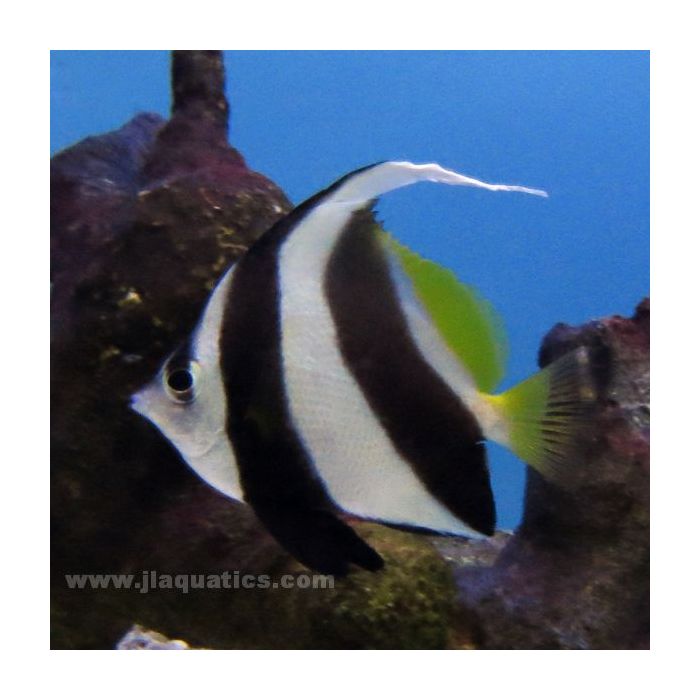Black Heniochus (Asia Pacific)
The stunning Black Heniochus develops an extremely high, trailing dorsal fin spike. Against its shimmery white body are bold black stripes, and its rear fins are painted lemon yellow. It looks somewhat like a Moorish Idol but is much easier to keep. It is very similar in appearance to the Schooling Heniochus but is much more common. It can be distinguished by its longer snout, less rounded breast, and anal fin which extends nearly to the tip of its caudal fin and is colored more white than black. It grows up to 9 inches and needs an aquarium of at least 125 gallons. It is regularly imported from Bali and the Philippines.
This species is very hardy and normally quite peaceful, and should not be kept with aggressive tank mates. It can be kept singly or in pairs or groups as long as all individuals are added at the same time to a large aquarium. Heniochus do not show differences between males and females. Heniochus are also known as bannerfish and are related to butterflyfish and angelfish, but lack the angel's distinctive cheek spines.
Butterflyfish and bannerfish may eat anemones, so they should not be kept in the same aquarium with one unless it is guarded by aggressive clownfish. The fish knows to attack the anemone on its mouth, which does not sting, and will make a quick meal of it. Many species also benefit from filamentous algae in the aquarium to graze on.
This species may nip on many types of corals, clam mantles, sponges, and feather dusters. They do not typically bother other types of invertebrates such as crustaceans. They feel most secure when there is lots of live rock to hide in, as well as plenty of open space for swimming. This species is easy to feed on a variety of meaty and herbivore preparations such as frozen Mysis shrimp, half shell clams, marine algae and Spirulina; it should be fed 2-3 times a day.
















